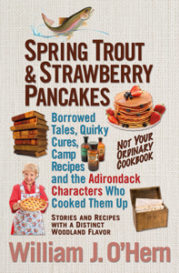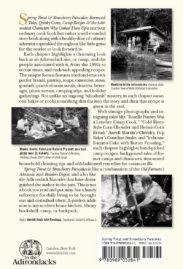Last Meal of the Season: To avoid spring cleaning, there were a number of things to look after when closing camp at the end of each season.
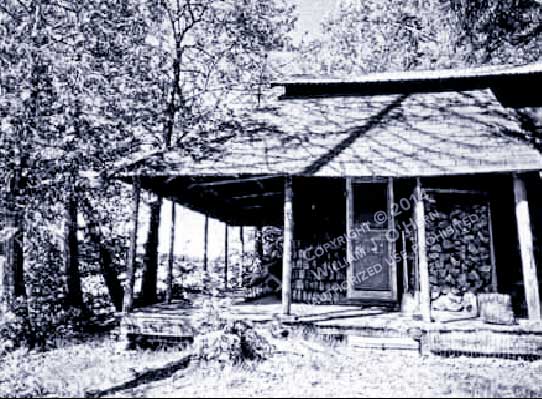
Spring Trout and Strawberry Pancakes
Last meal of the season
An excerpt from ” Spring Trout and Strawberry Pancakes “, Starting on page 247.
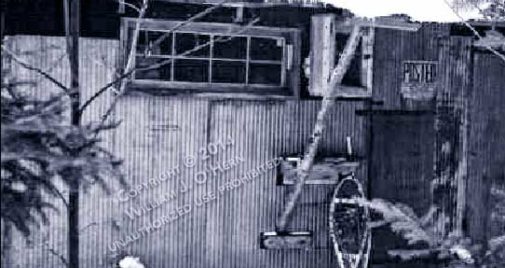
Bette and Jay’s last camp day at North Lake. “Closing camp.” The very words bring to mind a place, an atmosphere, an image of a familiar building, a covered porch where rocking and gazing, reading and telling stories took place—and the lump in the throat at having to leave it.
Photo by Wayne and Linda Cripe. Author’s Collection
TO AVOID a real spring cleaning, there were a number of things to look after when closing camp at the end of each season. Hedgehogs, chipmunks, in- sects, bees, raccoons, and mice were all waiting for the inexperienced or careless owner to vacate so they could move in, knock down, break, tear open, spill, trample on, and gnaw at. Chewing was what they seemed to enjoy most.
Camp owners have learned first-hand the cause-and-effect relationship of simply closing the camp door and leaving: unshuttered windows mean broken panes; unsupported beams crack or sag by spring. Sealed, vacuum-packed tin cans burst when they freeze; blankets, cloths and clothing left out are full of ragged holes by spring. Unprotected mattresses are a perfect nesting site for mice. Open crockery can be found filled with seeds, nuts and shucks; leaving a chimney uncapped is like posting a sign saying “Enter” or “Nest Here.” And the calling cards of rodents—the droppings— are found scattered helter-skelter.
To combat all this, there is a standard “To Do” list when one closes for the winter:
- A. Scrub away all traces of food and human salt from table, chairs, counter, and floor.
- B. Leave dry food and matches in rodent-proof containers.
- C. Store textiles (clothing, blankets, etc.) and bed mattresses in a tin-lined, tightly sealed can or suspend them on narrow rope from the ceiling.
- D. Board up windows.
- E. Keep the crawl space between floor and ground clear of bric-a-brac, and fence it off.
- F. Prop sturdy poles under roof and porch beams for protection against snow and ice build-up. Arrange to have someone shovel the roof and inspect premises.
- G. Disconnect water pipes, drain them, and plug the pipe ends to keep rodents out.
- H. Clean woodstove and fireplace. Lay in kindling.
During Rev. Byron-Curtiss’ last ten years a following this list to the letter, and as a rundown.His last log entry departed from his usual ones, which often began, “Last night in Camp – duly and properly celebrated,” and which always ended by thanking God. Instead, the eighty plus-year-old man scrawled in very shaky pen strokes, “Visited camp on this pleasant day. I desired to see it one more time before snow closes in.”
“He was quiet when we turned to leave that day,” Tom Kilbourn, his driver, reported, “and that was unusual for him.” The owner never returned.
Kilbourn purchased the camp in 1953. For the next forty years he rented the lakeside building on a yearly time-share basis.
On Bette’s and my final day at Nat Foster, Tom had given me all of The Reverend’s log books, personal papers, and photo albums. My plan was to write about “the Bishop of North Lake.”
I believed a recorded knowledge of the region needed to be done and I soon wrote two books: Adirondack Stories and Adirondack Influence: The Life of A. L. Byron-Curtiss 1871–1959.
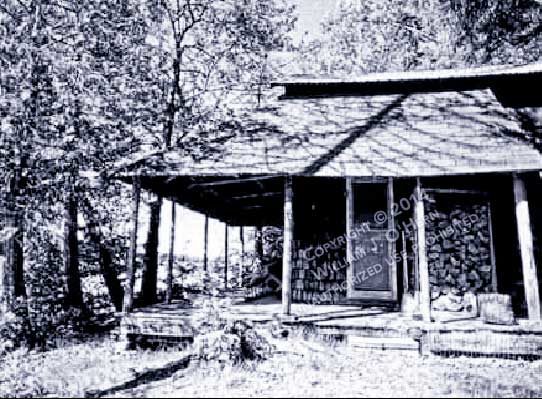
Elated teenagers pose on the summit of Ice Cave Mountain after finding the famous Ice Cave. Circa 1930s.
Courtesy Thomas and Doris Kilbourn .The A. L. Byron-Curtiss Collection
